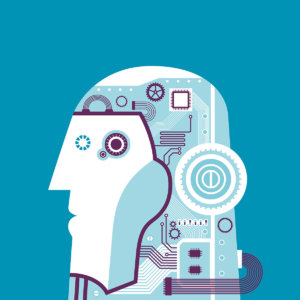Can Artificial Intelligence Replace Executive Decision Making?
For the time being, countless decisions still require human engagement.
Topics
Competing With Data & Analytics
Awash in data, executives dream of a time when the Jetson utopia finally manifests — and they find themselves sipping coffee and cashing checks while machines slave away for them, uncovering unexpected business insights and learning optimal ways to manage organizations.
Despite improvements in cognitive technologies, that dream managerial scenario is still far from reality. Decisions that executives face don’t necessarily fit into defined problems well suited for automation. At least for the time being, countless decisions still require human engagement.
Consider machine learning. To oversimplify, machine learning emphasizes algorithms that use numerous examples as inputs. In an ideal world, machine learning would reveal connections between observations and outcomes with minimal human guidance. In other words, machines would excel at finding patterns and making data-based predictions.
Recent advances in machine learning and cognitive technologies have been remarkable. We’ve seen impressive inroads in areas such as radiology, and accounting. Nevertheless, executives resist using these approaches for decision making for many reasons, including …
- Algorithmic approaches typically require numerous examples. Organizations rarely have the number of examples needed to understand relationships between everything in the world that can affect an organization. This is the managerial version of the “curse of dimensionality.” The ratio of “examples of past similar decisions” to “stuff that might be important for those decisions” can be abysmally low.
- Even with ever-increasing data collection, many known explanatory variables are still difficult to capture. Algorithmic performance is always better when more information is known, structured, and available. In particular, it is difficult to incorporate data about events that didn’t happen but could have, or that did happen but had no data collected about them.
- Beyond that, executives can have a broad view of new information that didn’t exist before, but could make a difference in the future — such as coming legislative, regulatory, or technology changes. It is harder to make out-of-sample predictions than in-sample, particularly when extrapolating and boldly going where no data has gone before.
- Executives don’t have multiple organizations that would enable them to make randomized A/B tests. Ideally, learning from past decisions could occur by observing similar scenarios with alternative decisions. Instead, executives must estimate counterfactuals based on limited information.
Get Updates on Leading with AI and Data
Monthly insights on how artificial intelligence impacts your organization and what it means for your company and customers.
Please enter a valid email address
Thank you for signing up
As a result, current cognitive technologies focus on the easiest problems. And while this makes sense, the questions these approaches can answer may not be the foremost question in an executive’s mind.


Comments (4)
megumi chakma
Jose Miguel Rodriguez
Chandra Pandey
Praveen Kambhampati